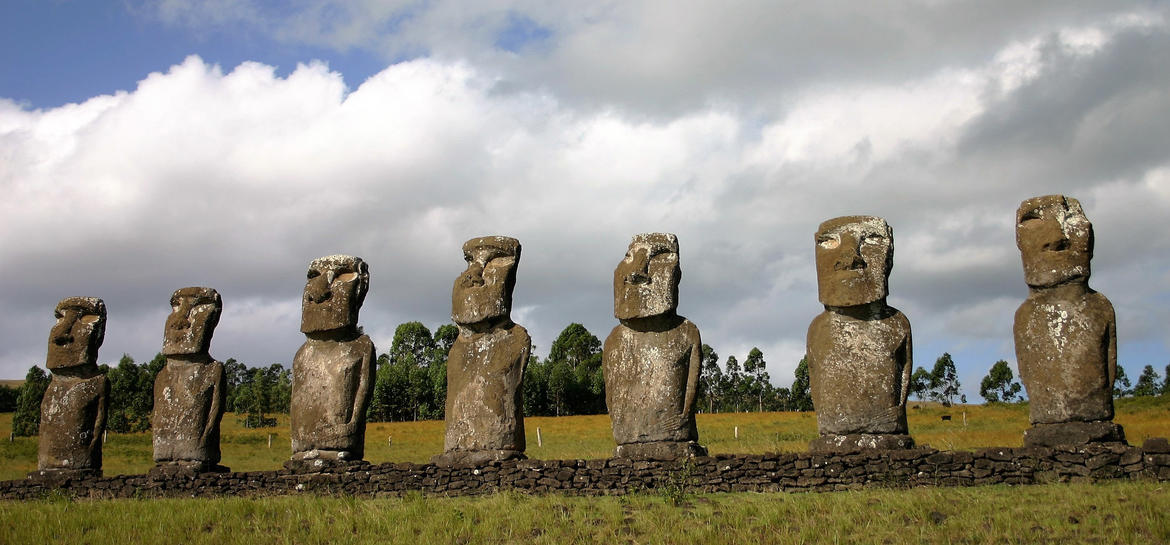The mystery of the Easter Island statues and choosing the best telephone plan
The OECD has just published the results of the PISA test – the world’s biggest class exam, which its representatives conducted in 2018. On one day, in 79 countries, 600,000 school pupils, representing 32 million of their peers, tackled the two-hour-long test.

Photo: Public Domain/goodfreephotos.com
The mystery of the Easter Island statues and choosing the best telephone plan
The OECD has just published the results of the PISA test – the world’s biggest class exam, which its representatives conducted in 2018. On one day, in 79 countries, 600,000 school pupils, representing 32 million of their peers, tackled the two-hour-long test.
Photo: Public Domain/goodfreephotos.com
The questions tested pupils’ knowledge and skills in science, mathematics and reading comprehension. Their results provide an important reference point for the education policy and how the quality of education is perceived in the various countries.
What exactly did the pupils do? For example, they had to analyse various texts about Easter Island. Sources of information included a professor’s blog, an extract from a book, and a newspaper article. The questions were about the disappearance of trees from the island and the collapse of a civilisation. The next block of tasks involved raising chickens, dealing with their illnesses and finding information about giving medication to animals, calculating doses and selecting information on an internet forum. In the last part of the test, the pupils were asked to identify the sentences that made sense, thereby testing their reading speed.
Some pupils also took an exam testing financial literacy, in which, for example, they had to calculate the cost of a family car bought with a loan, and decide whether it makes sense to pay a phone bill in advance and then pay extra for additional credit.
The pupils completed the tests on computers, and all tasks were in their native languages.
The best performers in all the tests were the pupils from China and Singapore. The 15-year-olds from the Philippines, Kosovo and Panama fared worst. Estonia achieved the highest level among EU members, claiming fifth place out of 79 countries, followed by Finland (10th) and Poland (11th).
This is what our analysis of the pupils’ results showed us.
Reading comprehension test
According to the description of the study, reading skills were tested in three areas – locating information, understanding the meaning, and evaluating and reflecting on texts.
The best results among European Union countries in this area were achieved by the 15-year-olds from Estonia, while pupils from Bulgarian schools came out worst.
We also checked where reading comprehension skills had improved since the last PISA study in 2015. Pupils from Hungary had made the greatest progress, improving the results of their predecessors by 6.5 points. At the other end of the scale, the results of pupils from Cyprus and the Netherlands were both down 18 points compared to 2015.
Mathematics
The goal of the mathematics skills test was to determine to what extent pupils could use their knowledge when required to solve problems in their surroundings. Hat mattered was the ability to use tools, rather than knowledge of theory.
« Is it okay to give aspirin to my hen? » asks a chicken owner on an internet forum. The pupil had to choose reliable advice from numerous suggestions given by other forum users, as well as calculate the dosage.
In this case it was the pupils from Estonia, the Netherlands and Poland who did best out of all EU countries.
For maths skills too, we checked the progress since the last study. The Latvian and Cypriot pupils had gained the most since the previous test – with almost 14 points more each.
Scientific literacy
The goal of this test was to assess the pupils’ use of scientific knowledge to solve tasks related to the problems of everyday life. The tasks measured knowledge of scientific facts as well as how they arrived at this knowledge and testing various hypotheses.
One of the texts analysed by pupils concerned the influence of cow’s milk on health. The test-takers had to separate facts from opinions. The facts were the results of the research of Swedish scientists, who found that adult women drinking milk suffered more bone fractures.
The highest science scores in the EU also went to Estonia. In global terms, only pupils from China, Singapore and Hong Kong did better.
Which countries improved their scores for scientific literacy the most compared to 2015? Poland had the largest increase, with a gain of almost 10 points, while Latvia, Cyprus and Sweden all improved by 6 points. Bulgarian pupils, meanwhile, dropped almost 22 points compared to their predecessors taking the test in 2015.
